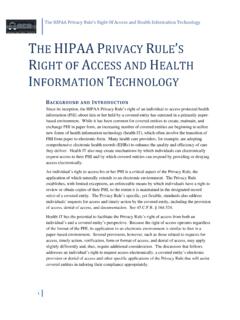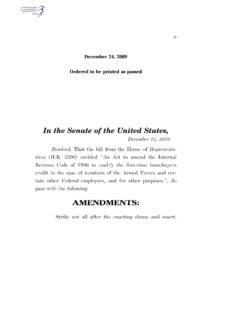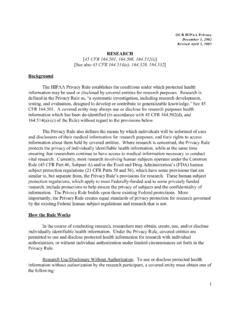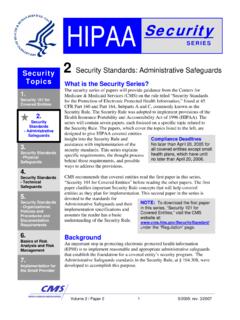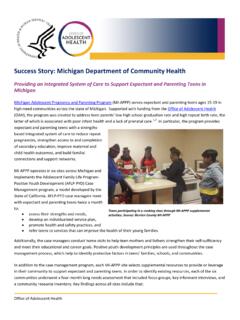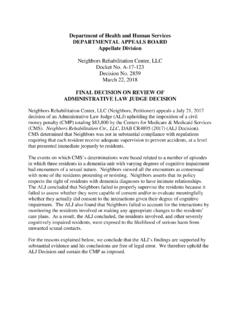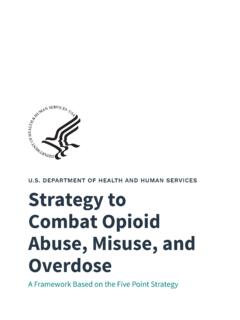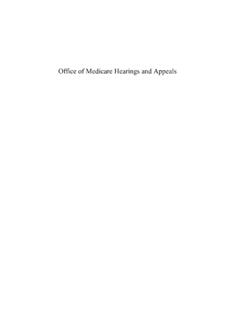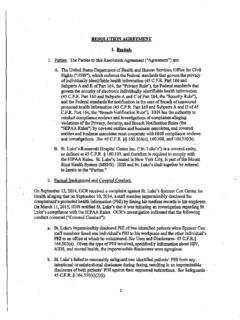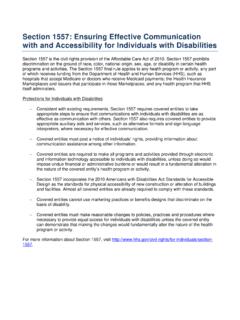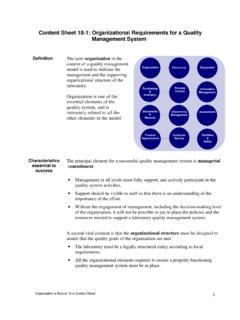Transcription of COVID-19 Pandemic Response, Laboratory Data Reporting ...
1 COVID-19 Pandemic Response, Laboratory Data Reporting : CARES Act Section 18115. January 8, 2021. Assuring a rapid and thorough public health response to the COVID-19 Pandemic necessitates complete and comprehensive Laboratory testing data, including standardized test results, relevant demographic details, and additional information that can improve both the public health response to SARS-CoV-2 and COVID-19 . These data contribute to understanding disease incidence and trends: initiating epidemiologic case investigations, assisting with contact tracing, assessing availability and use of testing resources, and identifying supply chain issues for reagents and other material.
2 Laboratory testing data, in conjunction with case reports and other data, also provide vital guidance for mitigation and control activities. As the country begins to reopen its doors, access to clear and accurate data is essential to communities and leadership as they use data to make decisions for a phased reopening. For individuals, access to personal test results improves feelings of safety, security, and awareness, and empowers them to take action, if necessary, to protect themselves, their families, and their communities. Public Law 116-136, 18115(a), the Coronavirus Aid, Relief, and Economic Security (CARES).
3 Act, requires every Laboratory that performs or analyzes a test that is intended to detect SARS- CoV-2 or to diagnose a possible case of COVID-19 to report the results from each such test to the Secretary of the Department of Health and Human Services (HHS). In addition, the statute authorizes the Secretary to prescribe the form and manner, and timing and frequency, of such Reporting . This document outlines the requirements for data submission to HHS as authorized under this law. In an effort to receive these data in the most efficient and effective manner, the Secretary is requiring that all data be reported through existing public health data Reporting methods, described below.
4 As a guiding principle, data should be sent to state or local public health departments using existing Reporting channels (in accordance with state law or policies) to ensure rapid initiation of case investigations by those departments, concurrent to Laboratory results being shared with an ordering provider, or patient as applicable. Entities Required to Report All laboratories including laboratories, testing locations operating as temporary overflow or remote locations for a Laboratory , and other facilities or locations performing testing at point of care or with at-home specimen collection related to SARS-CoV-21 shall report data for all testing completed, for each individual tested, within 24 hours of results being known or determined, on a daily basis to the appropriate state or local public health department based on the individual's residence.
5 Methods for Submission The required data elements related to Laboratory Data Reporting to HHS may be reported through the following avenues: 1. Submission of Laboratory testing data directly to state or local public health departments, as required by state and/or local law or policy. These entities will then submit de- identified data to the CDC on a daily basis using either Health Level 7 (HL7) messaging or the CDC-provided CSV format. 2. Submission of Laboratory testing data to state and local public health departments through a centralized platform (such as the Association of Public Health Laboratories' AIMS.)
6 Platform) where such data will then be routed to the appropriate state and local authorities and routed to CDC after removal of elements to achieve de-identification according to applicable rules and regulations. 3. Submission of Laboratory testing data through a state or regional Health Information Exchange (HIE) to the appropriate state or local public health department and to the CDC. as directed by the state. 4. CMS-certified long-term care facilities may submit point-of-care SARS-CoV-2 testing data, including antigen testing data, to CDC's National Healthcare Safety Network (NHSN). This CDC- and CMS-preferred pathway to submit data to CDC's NHSN.
7 Applies only to CMS-certified long-term care facilities. Test data submitted to NHSN will be reported to appropriate state and local health departments using standard electronic Laboratory messages. Other types of LTC facilities may also report testing data in NHSN. for self-tracking or to fulfill state or local Reporting requirements, if any. Required Data Elements The following data elements must be collected and reported for SARS-CoV-2 Laboratory tests, for the transmission of complete Laboratory testing data to the CDC or the Secretary's designee. (Note: additional data elements may be requested at a future date.)
8 1. Test ordered use harmonized LOINC codes provided by CDC. 2. Device Identifier 1 The CARES Act authorizes the Secretary to prescribe the laboratories which must submit the required reports. This definition of laboratories is consistent with Clinical Laboratory Improvement Amendments (CLIA), under which a Laboratory is defined as a facility that performs applicable testing on materials derived from the human body for the purpose of providing information for the diagnosis, prevention, or treatment of any disease or impairment of, or assessment of the health of, human beings. The CLIA. regulations provide that facilities only collecting or preparing specimens (or both) or only serving as a mailing service and not performing testing are not considered laboratories.
9 However, facilities collecting specimens may be directed by laboratories to provide the information required to be reported by the laboratories. 3. Test result use appropriate LOINC and SNOMED codes, as defined by the Laboratory In Vitro Diagnostics (LIVD) Test Code Mapping for SARS-CoV-2 Tests provided by CDC. 4. Test Result date (date format). 5. Accession #/Specimen ID. 6. Patient age 7. Patient race 8. Patient ethnicity 9. Patient sex 10. Patient residence zip code 11. Patient residence county 12. Ordering provider name and NPI (as applicable). 13. Ordering provider zip 14. Performing facility name and/or CLIA number, if known 15.
10 Performing facility zip code 16. Specimen Source - use appropriate LOINC, SNOMED-CT, or SPM4 codes, or equivalently detailed alternative codes 17. Date test ordered (date format). 18. Date specimen collected (date format). The following additional demographic data elements should also be collected and reported to state or local public health departments but these data will not be collected by CDC or the Secretary's designee. State and local privacy standards apply to the collection of these data elements. (Note: additional data elements may be requested by state, local or federal health departments at any time.).
